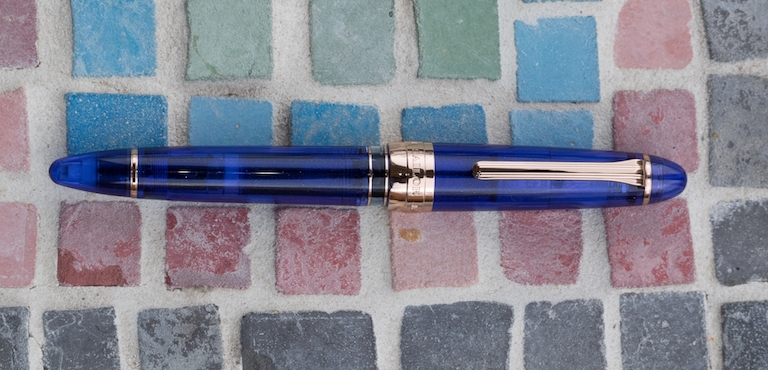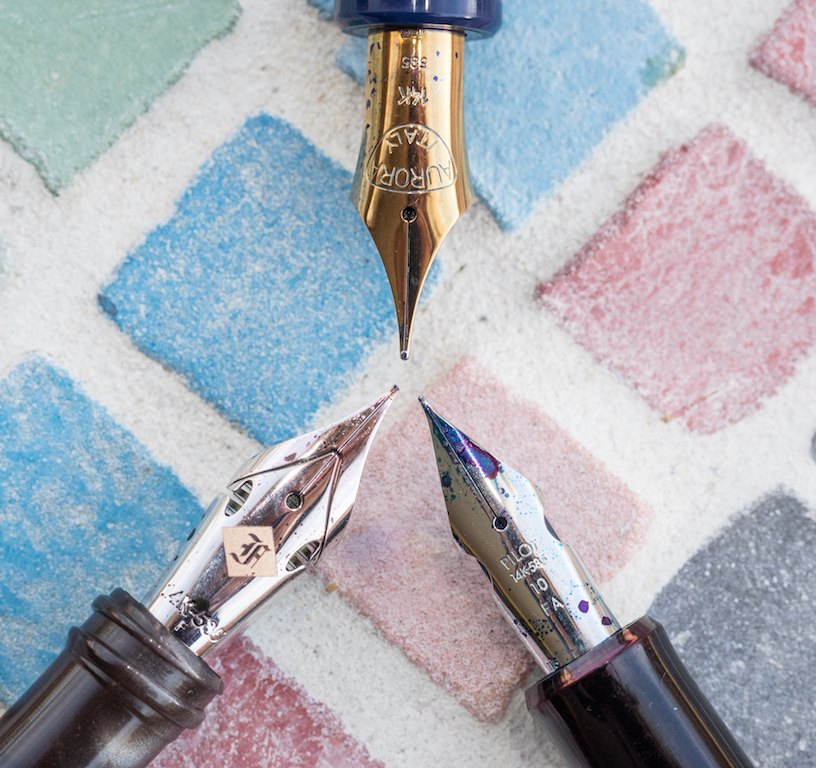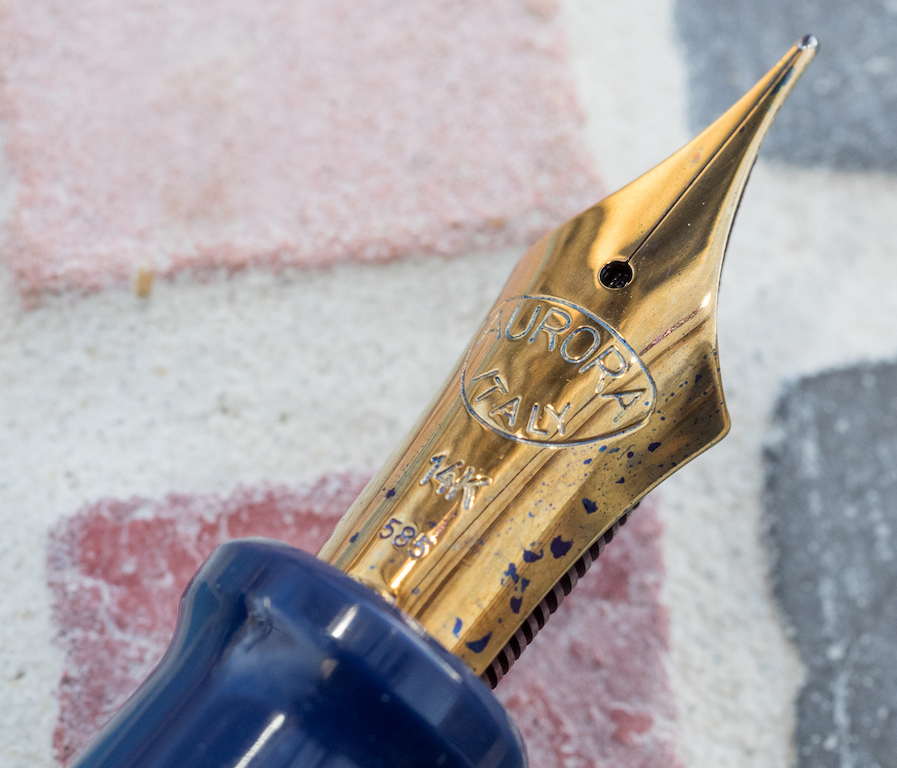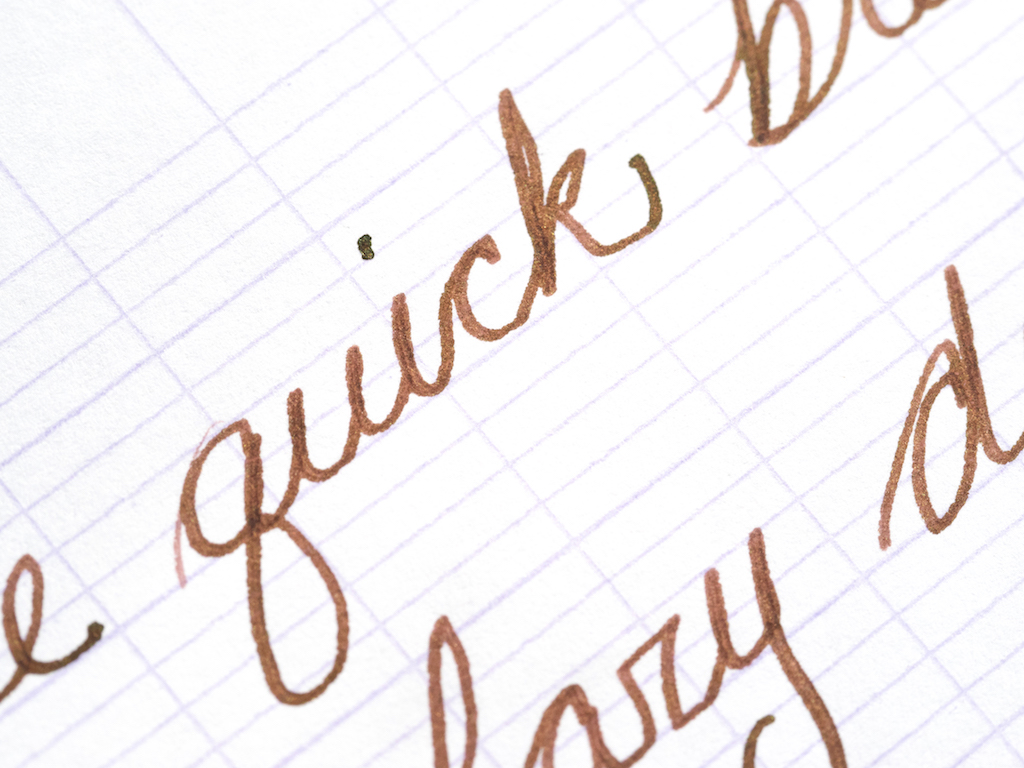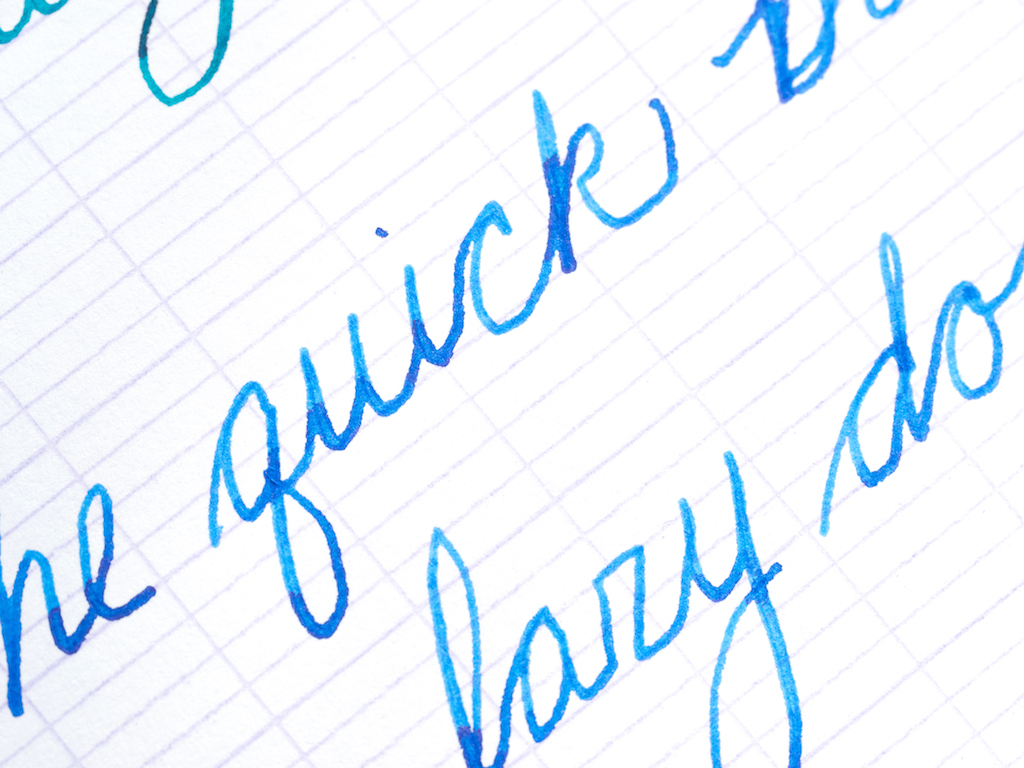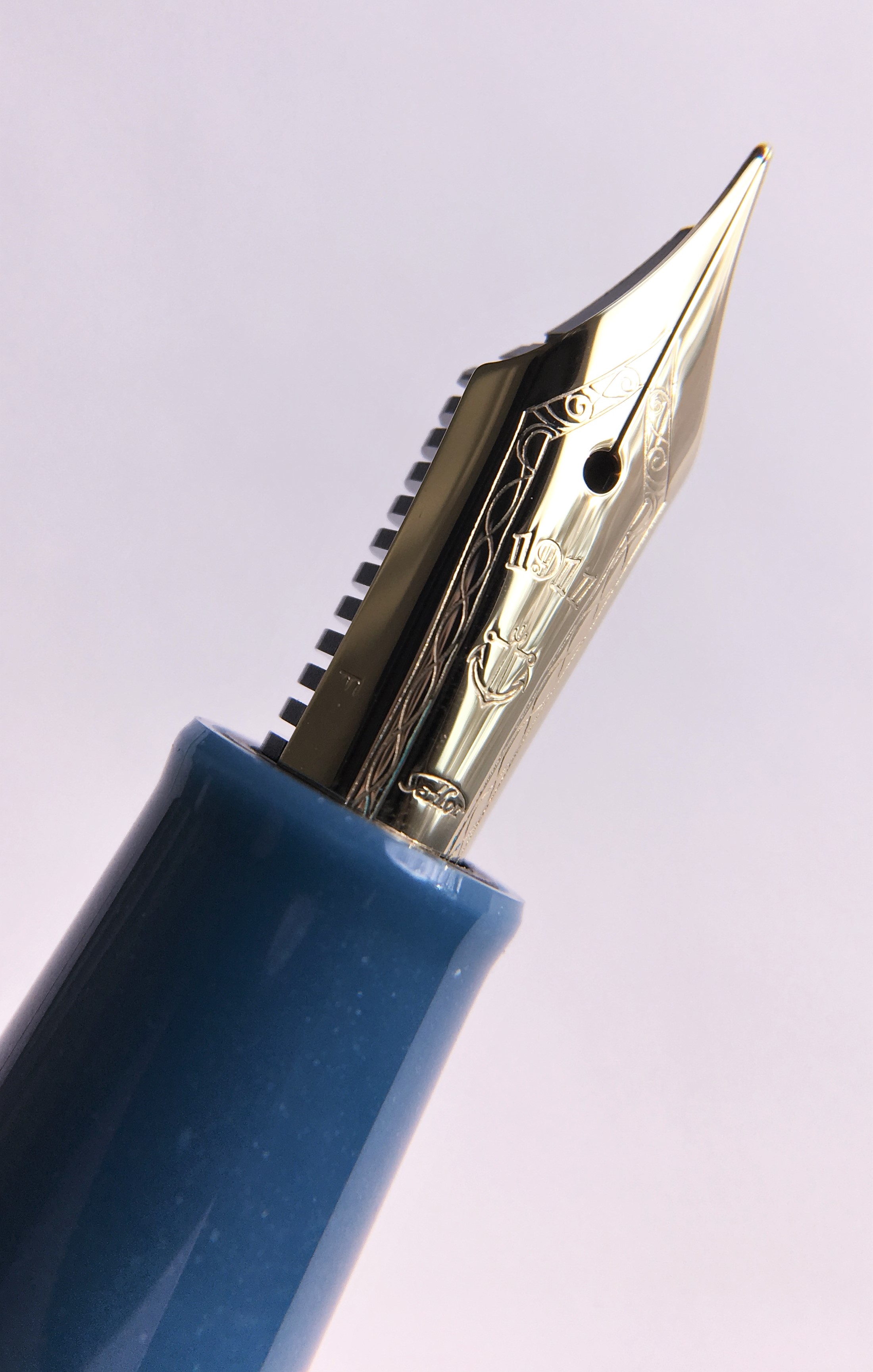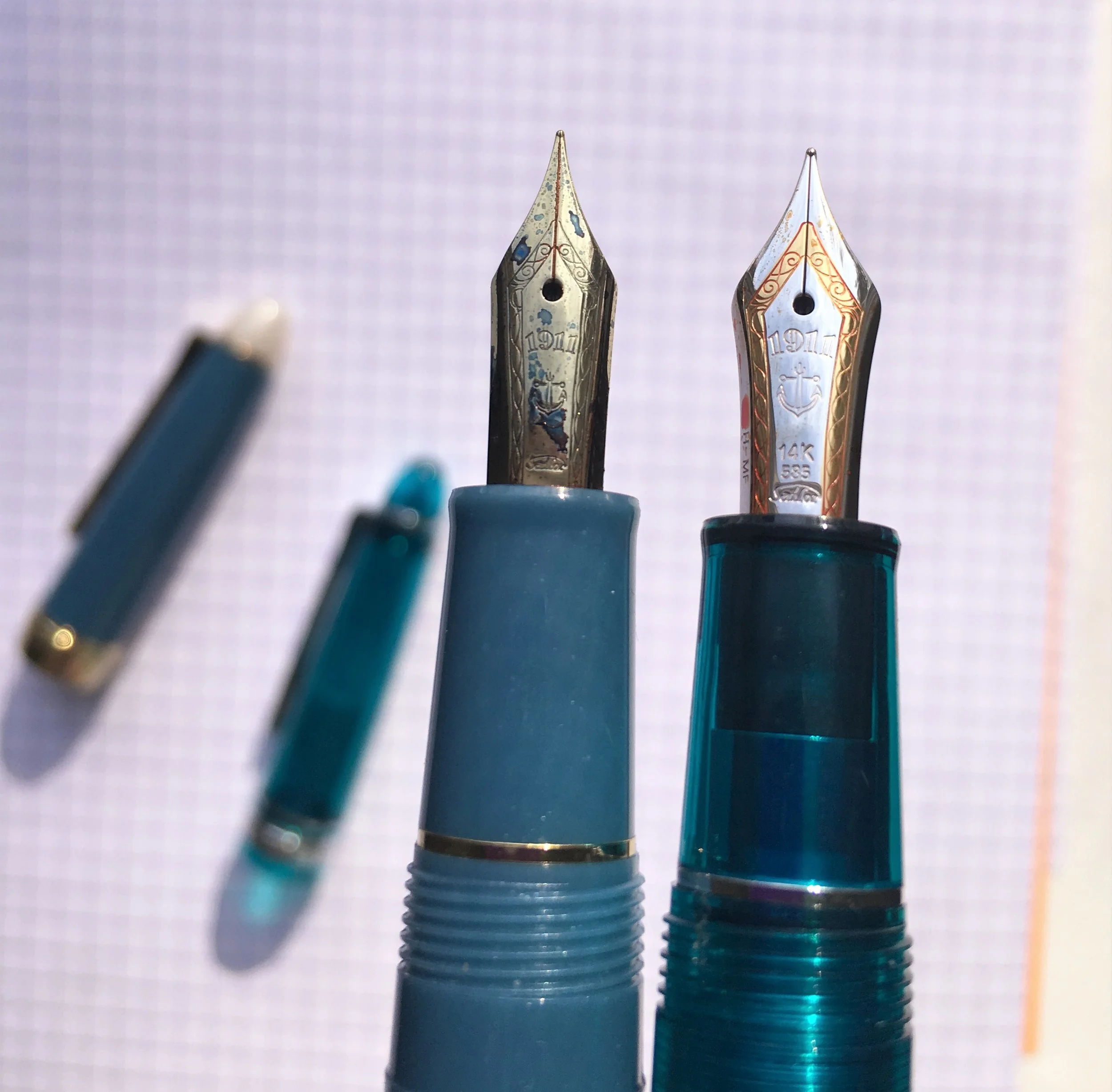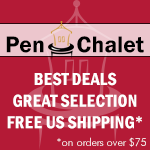(Susan M. Pigott is a fountain pen collector, pen and paperholic, photographer, and professor. You can find more from Susan on her blog Scribalishess.)
I own several Sailor fountain pens, but I’ve always been interested in their Realo model. I never bought one because I don’t like the colors offered by American companies (black, maroon, and nibs.com has a special edition in yellow). Luckily, I stumbled upon a Japanese-only edition Realo in the Sale forum on Fountain Pen Geeks. This special Realo is called “Tenku Gensou” which I believe means something like “sky illusions” (someone who speaks Japanese please correct me if I’m wrong).
This pen is absolutely stunning. It is a dark, translucent blue acrylic with subtle sparkles.
It has rose gold accents and a rose gold 21k music nib. Just look at that gorgeous fat nib tip.
The Sailor Profit Realo is exactly the same size as the large 1911 model.
But, the Realo differs from the 1911 in several ways. First, the cap band is much wider (about 1/2 inch). It is engraved with “Sailor Japan Founded 1911.”
Second, the Realo has an ink window, beautifully accented with two gold rings.
Third, the Realo is a piston filler, unlike most Sailor pens which are cartridge/converters. The Realo only holds 1ml of ink, so it isn’t a large-capacity piston filler. Sailor cartridges hold 1.2ml and their converters hold 0.7ml. Even though the pen doesn’t hold as much ink as a Pelikan M800 (1.5ml), it’s still nice to have a piston filler on a Sailor pen, especially one with a juicy music nib.
The music nib is absolutely fantastic. Unlike most music nibs which have three tines, Sailor music nibs only have two.
The nib provides a juicy broad line on down strokes and thin lines on horizontal strokes.
I inked my Realo with Iroshizuku Asa Gao, and the music nib shows off this ink’s shading properties well.
Sailor’s Realo fountain pens are more expensive due to the piston mechanism. A regular 1911 cartridge/converter costs around $250+ (depending on the color and style). A Realo costs $328. And, if you want a Japanese-only Realo, expect to pay even more. My Tenku-Gensou is currently $353.57 plus shipping on Rakuten (at current exchange rates).
I’m really happy with my special Tenku-Gensou Realo. The color is spectacular, I love how it sparkles in sunlight, and the rose gold accents are gorgeous. I’m very happy with the music nib—it’s smooth and wet.
Pros
- This special edition Sailor Profit Realo Tenku-Gensou is stunning— deep translucent blue with sparkles and rose gold accents. It is one of the prettiest blue pens I own (and I own a lot of blue pens).
- A Sailor with a piston mechanism is wonderful. Even though the pen doesn’t hold copious amounts of ink, it holds more than a converter, and the ink window adds another beautiful design element to the pen.
- Sailor nibs are gorgeous and well made. The music nib on this pen writes perfectly.
Cons
- Sailor Realos are more expensive than Sailor’s other pens.
- If you buy a Realo from an American retailer, you’re stuck with two color choices: black or maroon (unless you want to pay $520 for Classic Fountain Pens 22nd Anniversary yellow Pro Gear Realo).
- If you want this glittery blue special Realo, you’ll need to purchase it from a Japanese retailer and pay the shipping costs. I was lucky to find a used one.
Enjoy reading The Pen Addict? Then consider becoming a member to receive additional weekly content, giveaways, and discounts in The Pen Addict shop. Plus, you support me and the site directly, for which I am very grateful.
Membership starts at just $5/month, with a discounted annual option available. To find out more about membership click here and join us!


